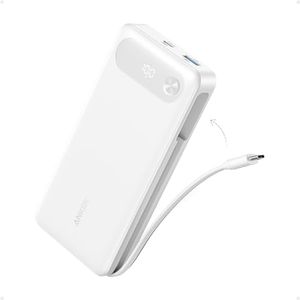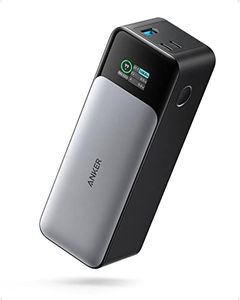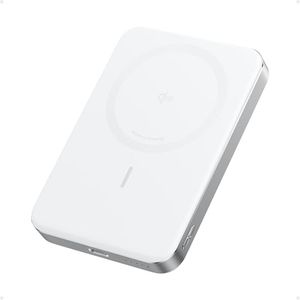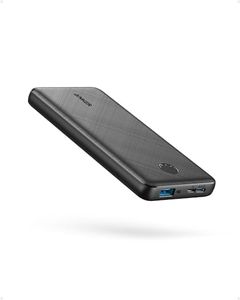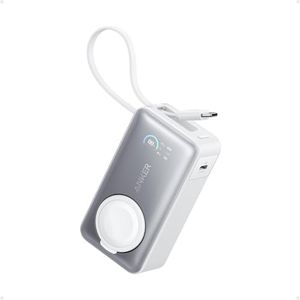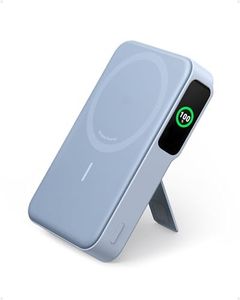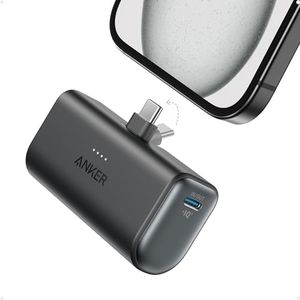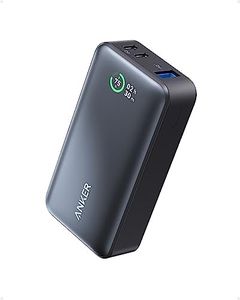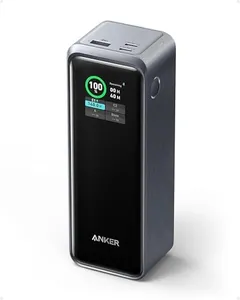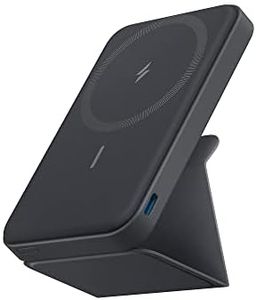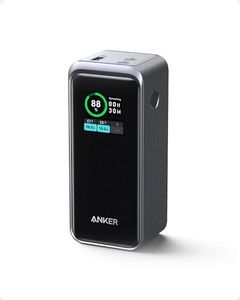We Use CookiesWe use cookies to enhance the security, performance,
functionality and for analytical and promotional activities. By continuing to browse this site you
are agreeing to our privacy policy
10 Best Anker Portable Chargers
From leading brands and best sellers available on the web.By clicking on a link to a third party's website, log data is shared with that third party.
Buying Guide for the Best Anker Portable Chargers
Choosing the right portable charger (power bank) is all about matching your charging needs with the device's capabilities. Whether you're topping up your phone on the go, keeping your tablet alive during travel, or powering more demanding devices, it's important to understand which features matter most for your daily routine. The best portable charger is one that balances size, power, and features to fit your lifestyle, so understanding what each specification means helps you choose confidently.Battery Capacity (mAh)Battery capacity is measured in milliamp-hours (mAh) and tells you how much charge a power bank can store. Higher mAh means more charge cycles for your devices. Smaller capacities (up to 5,000 mAh) are lightweight and ideal for quick phone top-ups; they're great for people who only need an emergency boost. Medium capacities (between 10,000 and 15,000 mAh) can fully charge a smartphone two to three times or power a tablet once, suiting those looking for all-day coverage without much bulk. Large capacities (20,000 mAh and above) are heavier and bulkier, but perfect for charging multiple devices or powering demanding gadgets on long trips. Your need for daily charging versus occasional backup should guide your choice here.
Output Ports and Output Power (Wattage/Amp Output)Output ports determine how many devices you can charge at once, and output power (measured in Watts or Amps) tells you how fast each device will charge. Some chargers feature a single USB port, suitable for basic needs, while others offer multiple ports for charging several devices simultaneously—great for tech-heavy users or families. As for power, standard output (5W–12W or 1A–2.4A) works for phones and small devices, while fast charging standards (18W, 20W or higher) can significantly speed up charging for newer smartphones or even laptops. Think about whether you often share your charger or need to quickly top up powerful devices when picking your model.
Physical Size and WeightPortable chargers come in a range of sizes, from ultra-slim models that slip into a pocket to larger, heavier units that are best for bags or travel. Compact, lightweight chargers are easier to carry but usually have lower capacity, making them perfect for everyday commuters or light packers. Larger chargers, while more cumbersome, provide more power and are better for longer trips or users with multiple devices. Your personal carrying habits and frequency of use should dictate whether portability or maximum power is more important.
Input Charging Speed (Recharging the Power Bank)Input charging speed is how quickly the power bank itself recharges, often specified in Watts or Amps and by the type of input port (USB-C or Micro USB). A slower recharge time might not matter if you only use the charger occasionally, but for those who rely on it daily or during travel, a faster input (like 18W or USB-C PD) can save hours. Consider how often you’ll need to recharge the power bank and whether quick turnaround is critical for your routine.
Safety Features and Battery ProtectionSafety features like over-charge, over-current, short circuit, and temperature protection ensure both your charger and devices aren’t damaged during use. Reputable brands often include multiple layers of safety protection, keeping things safe and reliable. If you’ll use the charger for expensive devices or plan to charge unattended, prioritize good safety specifications to keep peace of mind.
Pass-Through ChargingPass-through charging allows you to charge your device from the power bank while the power bank itself is being charged. This is helpful if you have limited wall outlets or want to simplify overnight charging. However, it’s not always available or might reduce overall charging speed, so check if this matters for your setup—especially for power users who run multiple gadgets overnight.

